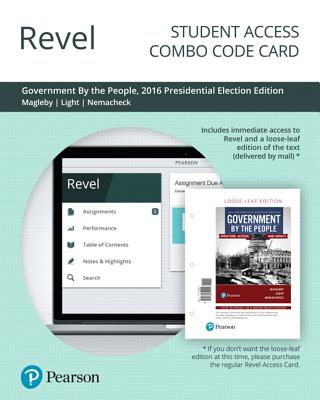Supply Chain Redesign: Transforming Supply Chains into Integrated Value Systems
暫譯: 供應鏈重塑:將供應鏈轉型為整合價值系統
Robert B. Handfield, Ernest L. Nichols Jr.
- 出版商: Prentice Hall
- 出版日期: 2002-08-22
- 售價: $810
- 語言: 英文
- 頁數: 400
- 裝訂: Hardcover
- ISBN: 0130603120
- ISBN-13: 9780130603128
已絕版
買這商品的人也買了...
-
 SQL Server 2000 管理實務
SQL Server 2000 管理實務$680$537 -
 SQL Server 2000 設計實務
SQL Server 2000 設計實務$650$514 -
 $755Engineering Electromagnetics, 6/e
$755Engineering Electromagnetics, 6/e -
 ASP.NET 程式設計徹底研究
ASP.NET 程式設計徹底研究$590$466 -
 STRUTS 實作手冊(Struts in Action: Building Web Applications with the Leading Java Framework)
STRUTS 實作手冊(Struts in Action: Building Web Applications with the Leading Java Framework)$690$538 -
 Microsoft Windows Server 2003 系統實務
Microsoft Windows Server 2003 系統實務$780$616 -
 Linux Server Hacks 駭客一百招 (Linux Server Hacks)
Linux Server Hacks 駭客一百招 (Linux Server Hacks)$400$316 -
 $1,176Microelectronic Circuit Design, 2/e (IE)(美國版ISBN:0072505036)
$1,176Microelectronic Circuit Design, 2/e (IE)(美國版ISBN:0072505036) -
 SCJP‧SCJD 專業認證指南 (Sun Certified Programmer & Developer for Java 2 #310-305 與310-027)
SCJP‧SCJD 專業認證指南 (Sun Certified Programmer & Developer for Java 2 #310-305 與310-027)$850$723 -
 發誓學會 Flash MX 2004 ActionScript
發誓學會 Flash MX 2004 ActionScript$620$527 -
 Linux 網路管理實務: 調校、帳號、監控、安全
Linux 網路管理實務: 調校、帳號、監控、安全$580$458 -
 JSP 與 Servlet 500 個應用範例技巧大全集
JSP 與 Servlet 500 個應用範例技巧大全集$590$460 -
 嵌入式系統導論, 3/e
嵌入式系統導論, 3/e$760$646 -
 Crystal Reports 10 整合實戰應用
Crystal Reports 10 整合實戰應用$490$382 -
 Code Complete: A Practical Handbook of Software Construction, 2/e (Paperback)
Code Complete: A Practical Handbook of Software Construction, 2/e (Paperback)$2,280$2,166 -
 More Effective C++ 國際中文版(最新修訂本) (More Effective C++: 35 New Ways to Improve Your Programs and Designs)
More Effective C++ 國際中文版(最新修訂本) (More Effective C++: 35 New Ways to Improve Your Programs and Designs)$520$411 -
 C++ 程式設計藝術 (C++ How to Program, 4/e)
C++ 程式設計藝術 (C++ How to Program, 4/e)$820$738 -
 Fedora Core 2 Linux 架站實務
Fedora Core 2 Linux 架站實務$650$514 -
 設計嵌入式硬體
設計嵌入式硬體$760$600 -
 Linear Systems and Signals, 2/e (IE-Paperback)
Linear Systems and Signals, 2/e (IE-Paperback)$1,190$1,166 -
 $1,029Mechanical Engineering Design, 7/e (美國版ISBN:0072921935)
$1,029Mechanical Engineering Design, 7/e (美國版ISBN:0072921935) -
 供應鏈及企業資源管理 SCM/ERM 大辭典
供應鏈及企業資源管理 SCM/ERM 大辭典$560$442 -
 SCM 供應鏈管理-策略、技術與實務
SCM 供應鏈管理-策略、技術與實務$760$684 -
 50 企業戰勝微利機密報告
50 企業戰勝微利機密報告$280$221 -
 Introduction to Supply Chain Management Technologies, 2/e (Hardcover)
Introduction to Supply Chain Management Technologies, 2/e (Hardcover)$4,430$4,209
相關主題
商品描述
Appropriate for courses in logistics, supply/value chains, or contemporary strategies for seeking competitive advantage.
In recent years, enterprises have recognized that supply chains exist to create customer value, and that customer value can be created throughout the supply chain. Supply Chain Redesign systematically introduces today's most important techniques, strategies, and tactics for optimizing supply chains. Two leading practitioners and business school faculty members identify key emerging trends and drivers in supply chain management; then show how to map existing supply chain networks, identify and integrate information flows within any organization, and discover the changes that will drive the greatest added value. They show how to enhance collaboration, integrating customers and suppliers to design products that support efficient supply chains; and how to make the most of strategic cost management techniques. Finally, drawing on their extensive consulting experience, as well as detailed case studies from GM and Nortel, the authors offer exceptional insight into key supply chain redesign success factors.
Table of Contents
Preface.
1. Supply Chain Management:
Transforming Supply Chains into Integrated “Value Systems”.
2. Understanding and Improving Supply Chains and Key Supply Chain Processes.
3. Internal Integration—Managing Information Flows within the Organization.
4. The Financial Impacts of SCM—Finding the “Sweet Spot”.
5. Creating Collaboration and Trust in the Supply Chain.
6. Customer/Supplier Integration into New Product Development.
7. Strategic Cost Management in a Global Supply Chain.
8. Navigating the Business to Business (B2B) E-Commerce Landscape.
9. Creating Information Visibility.
10. Managing Change in the Supply Chain: Lessons from General Motors.
Index.
商品描述(中文翻譯)
適合於物流、供應/價值鏈或當代尋求競爭優勢策略的課程。
近年來,企業已認識到供應鏈的存在是為了創造客戶價值,而客戶價值可以在整個供應鏈中創造。《供應鏈重設》系統性地介紹了當今最重要的技術、策略和戰術,以優化供應鏈。兩位領先的實務專家和商學院教職員識別了供應鏈管理中的關鍵新興趨勢和驅動因素;然後展示如何繪製現有的供應鏈網絡,識別並整合任何組織內的信息流,並發現將帶來最大附加價值的變化。他們展示了如何增強協作,整合客戶和供應商以設計支持高效供應鏈的產品;以及如何充分利用戰略成本管理技術。最後,基於他們豐富的諮詢經驗,以及來自通用汽車(GM)和北電網絡(Nortel)的詳細案例研究,作者提供了對供應鏈重設成功因素的卓越見解。
目錄
前言。
1. 供應鏈管理:將供應鏈轉變為整合的「價值系統」。
定義供應鏈。對供應鏈中價值的客戶需求增加。供應鏈關係。信息系統與供應鏈管理。一個過程模型:為價值系統創建的供應鏈管理。變更管理:供應鏈管理者面臨的挑戰。註釋。
2. 理解和改善供應鏈及關鍵供應鏈過程。
介紹。通過過程映射理解供應鏈。過程流程圖。內部供應鏈。外部供應鏈。跨組織供應鏈協作的好處。創造高效能供應鏈中時間的重要性。供應鏈中循環時間減少的機會。供應鏈物流的再造。供應鏈績效測量。總結:完美訂單與總成本。摘要。註釋。
3. 內部整合—管理組織內的信息流。
歷史觀點。供應鏈系統和應用的驅動因素。內部和外部的戰略整合。市場的全球化。強大信息系統和技術的可用性。啟用新的業務流程。替換過時的系統。戰略成本管理。企業資源規劃(ERP)。實施ERP系統。ERP「崩潰」。供應鏈ERP模塊。ERP和數據倉庫。當您的網站與業務策略不一致時。決策支持系統。摘要。註釋。
4. 供應鏈管理的財務影響—尋找「甜蜜點」。
內部化/外包:一個有爭議的問題。啟動內部化/外包決策。理解您的核心競爭力。技術成熟度。理解市場。內部化與外包—優勢/劣勢。摘要。註釋。
5. 在供應鏈中創造協作與信任。
供應鏈關係管理的根源。聯盟發展的概念模型。與供應鏈夥伴建立信任關係。管理供應鏈關係的挑戰。摘要。註釋。
6. 客戶/供應商整合到新產品開發中。
新產品開發過程的變化。供應商整合到新產品開發中。供應商整合方法。供應商整合到新產品開發過程模型。評估供應商的技術路線圖。發展供應商能力。摘要。註釋。
7. 全球供應鏈中的戰略成本管理。
供應鏈管理的財務影響:數據彙總。供應鏈中的戰略成本管理倡議。量化杠桿和交叉對接:收穫低垂的果實。全球物流和物料定位。全球供應商發展。目標定價。供應鏈的「綠化」:生命週期成本計算、再製造和回收。成本管理促進因素。註釋。
8. 導航商業對商業(B2B)電子商務環境。
互聯網的演變。互聯網的特徵。B2B技術環境。標準:B2B整合的基礎。「新興」標準。應該採用哪個標準?展望未來:新興技術。實施標準的問題。註釋。
9. 創造信息可見性。
信息在供應鏈中的重要性:避免「牛鞭效應」的影響。在供應鏈中創造信息可見性。信息可見性系統最佳實踐。協作規劃、預測和補貨(CPFR)。協作合同管理可見性系統。部署信息可見性系統:案例示例。結論。註釋。
10. 在供應鏈中管理變更:來自通用汽車的教訓。
在供應鏈中管理變更。激進的變更管理:洛佩斯時代。改變採購文化。供應鏈功能的內部整合。從訂單到交付的新時代:變更的驅動因素。改變供應鏈重設的文化。未來挑戰。註釋。
索引。



















